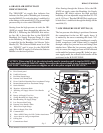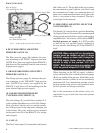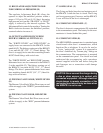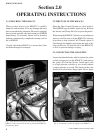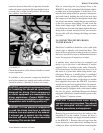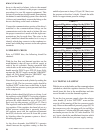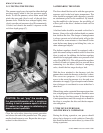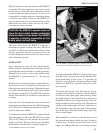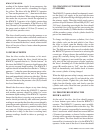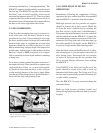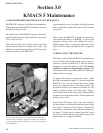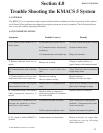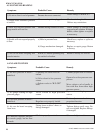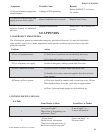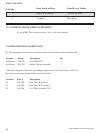
13
KMACS 5 MANUAL
© 2003 KMDSI Document # 041112001
The dive supervisor may not always be the KMACS
5 operator. The dive supervisor may want or need
the freedom to direct the entire operation includ-
ing the tenders and other personnel. As such, he is
responsible for making decisions regarding diving
conditions and safety. However, the KMACS 5
operator must always be an experienced diver who
understands the diver’s needs and has the diver’s
best interests always in mind.
CAUTION: The KMACS 5 operator must not
leave the dive control system unattended
while the diver is in the water. The KMACS
5 operator is directly responsible for the
diver’s safety and well being.
The diver must follow the KMACS 5 operator’s
directions in regards to depth and time. The diver
can NOT run the dive from the bottom. Thus, when
the dive supervisor himself is required to dive he
should relinquish control to the next most senior
diver remaining top side.
2.8 DESCENT
Upon entering the water, the diver should imme-
diately recheck communications with top side and
ensure that his mask or helmet is working correctly.
When he/she is ready to descend he should notify
the KMACS 5 operator that he is, “Leaving the
surface.”
Both the diver and tender should communicate in a
normal tone of voice. It should not be necessary for
either person to shout to be heard. Although the qual-
ity of the communications will usually be excellent,
not all divers speak clearly. The KMACS 5 operator
should listen carefully at all times to what the diver
is saying.
Once the diver has entered the water, monitor his
descent rate using the pneumo valve (D,O) and gauge
(C,P). The diver’s descent rate should not exceed 75
feet (23 meters) per minute.
As the diver descends, the KMACS 5 operator should
adjust the regulator (H) on the KMACS 5 to provide
150 psi (10.3 bars) over the pressure at the diver’s
depth at all times. This provides the best breathing
performance from the diver’s demand regulator.
It is essential that the KMACS 5 operator keep pace
with the diver’s descent and not lag behind in his
depth monitoring. If this occurs, it is possible for
the diver to exceed his maximum planned depth
without the KMACS 5 operator being aware this
has occurred.
To operate the pneumo, turn the knob for the ap-
propriate diver, counter clockwise, until the indica-
tor needle on the depth gauge starts moving. When
the depth gauge for the individual diver indicates a
depth that is known to be deeper than the diver, the
knob is turned clockwise until it is off. The indicator
needle on the depth gauge will move shallower as
the air bubbles leave the open end of the pneumo
hose at the diver. When the needle stops, that is the
diver’s actual depth.
Most umbilicals are made up with the diver end of
the pneumo hose having about two feet (.6 meters)
of loose hose. The diver can use this hose as an air
supply for inflating lift bags or for taking an exact
Fig. 10 KMACS 5 operator taking a reading with the
pneumo knob. The knob should be turned very slowly.



